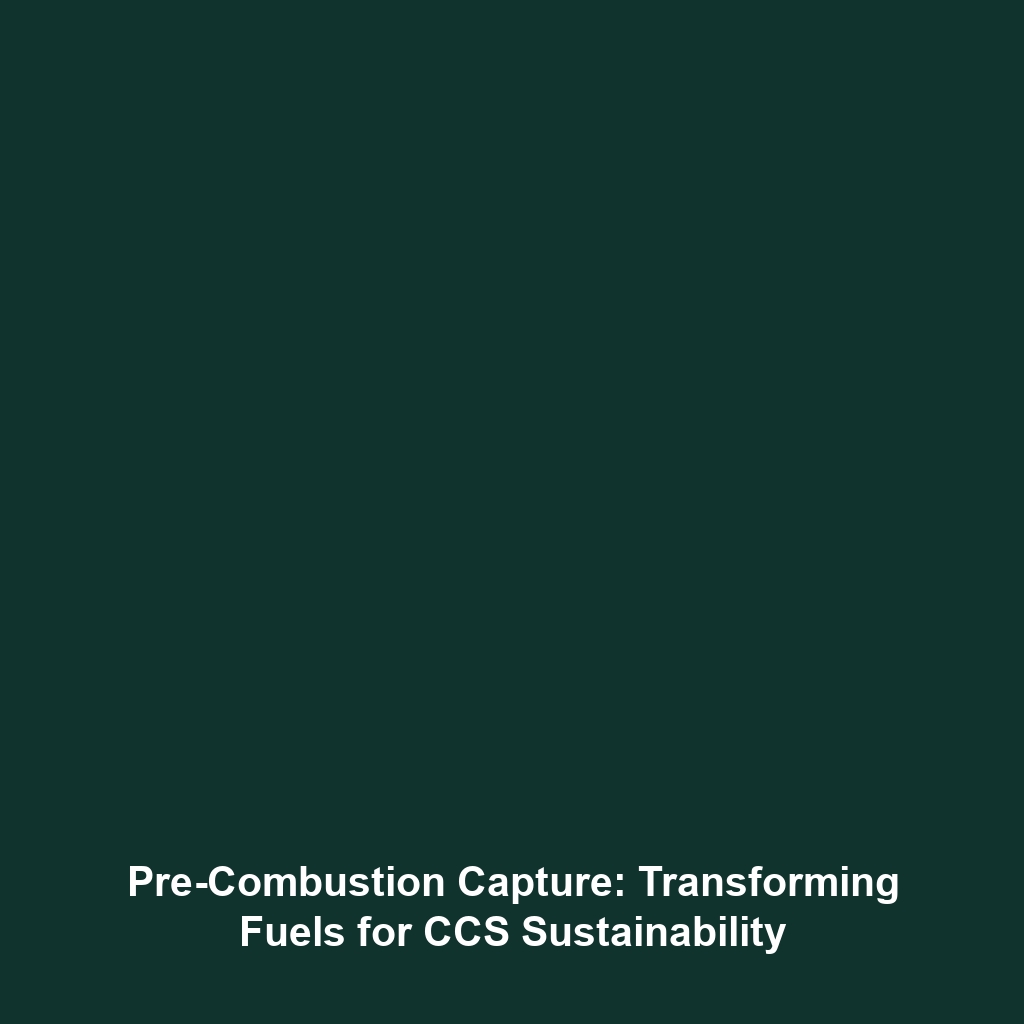Post-Combustion Capture: Capturing CO2 after Fuel is Burned
Introduction
Post-combustion capture is an essential technique in the realm of Carbon Capture & Storage (CCS), playing a crucial role in mitigating CO2 emissions from various industries. This technology captures carbon dioxide from flue gases after fossil fuels are burned, significantly reducing the greenhouse gases released into the atmosphere. As the world increasingly acknowledges the urgency of tackling climate change, understanding how post-combustion capture operates, its applications, and its challenges becomes fundamental in our quest for sustainable energy solutions.
Key Concepts
Several core principles define post-combustion capture within the CCS category:
- Absorption Technology: This method primarily utilizes solvents, such as amines, to chemically react with CO2, separating it from other gases in the exhaust stream.
- Adsorption Mechanisms: Adsorption involves materials that cling to CO2 molecules, allowing for its extraction from the flue gas.
- Membrane Separation: Advanced membranes can selectively allow CO2 to pass through, effectively filtering it from other gases.
Post-combustion capture not only aids in reducing emissions from power plants but also integrates with existing infrastructure, making it a practical option for global energy management.
Applications and Real-World Uses
The practical implications of post-combustion capture in CCS are significant:
- Power Generation: Many existing coal and natural gas power plants are retrofitted with post-combustion capture systems to reduce their carbon footprints.
- Cement and Steel Industries: These sectors are major CO2 emitters, and implementing this capture technology helps decrease their overall emissions.
- Direct Air Capture: Innovative methods are emerging that utilize aspects of post-combustion technology to directly capture CO2 from ambient air.
These applications underscore how post-combustion capture is pivotal in achieving global carbon reduction targets, illustrating its multi-faceted role within the broader CCS framework.
Current Challenges
Despite its potential, there are notable challenges of post-combustion capture that need addressing:
- Cost Efficiency: High operational costs remain a barrier for widespread adoption.
- Energy Requirements: The process consumes significant energy, which can offset some of the environmental benefits.
- Material Durability: Solvent degradation and overall maintenance of capture systems can pose significant operational challenges.
These issues in the field of CCS necessitate ongoing research and innovation to make post-combustion capture a viable solution for large-scale carbon management.
Future Research and Innovations
Looking ahead, several innovations are emerging in the post-combustion capture landscape:
- Next-Generation Solvents: Research is underway to develop more efficient and less energy-intensive solvents for carbon capture.
- Advanced Membrane Technology: Innovations in membrane design may enhance selectivity and efficiency in CO2 capture.
- Integration with Renewable Energy: Exploring how post-combustion capture systems can be integrated with renewable energy sources to improve overall sustainability.
Such advancements promise to significantly enhance the efficiency and applicability of post-combustion capture technologies in the context of global carbon reduction efforts.
Conclusion
In summary, post-combustion capture represents a critical component in the arsenal of technologies aimed at reducing greenhouse gas emissions within the framework of Carbon Capture & Storage (CCS). By capturing CO2 emissions after fuel combustion, this technology not only supports existing fossil fuel operations but also paves the way toward sustainable practices. To learn more about CCS and related innovations, explore our detailed resources on carbon capture technologies.

Leave a Reply